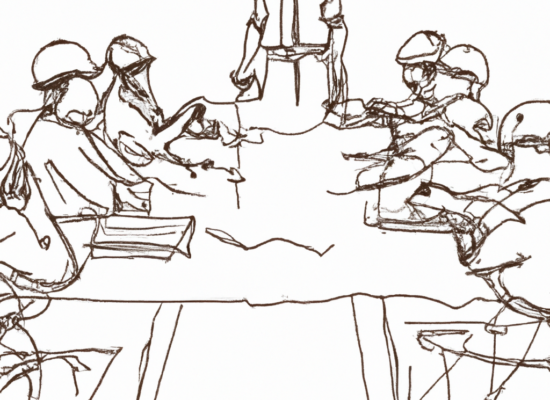Understanding the Vital Role and Architect’s Responsibilities in Building Design and Construction
Architects are the backbone of the building design and construction process, playing a crucial role in bringing an idea to life. As a professional in the industry, an architect is responsible for not only the design but also the overall development of a building project. The following sections outline the main responsibilities of architects and why their role is so important in the building process.
I. Design Responsibilities:
The design responsibilities of an architect are central to the success of a building project.
These Architect’s responsibilities include:
- Developing a concept and design for the building, taking into account the client’s needs, budget, and any local regulations or codes.
- Creating detailed drawings and specifications to guide the construction process, including plans, elevations, sections, and details.
- Collaborating with other design professionals, such as engineers and landscape architects, to ensure that all aspects of the design are integrated and cohesive.
- Using computer-aided design (CAD) software to create and modify drawings and to communicate with the design team and contractors.
II. Project Administration Responsibilities:
In addition to the design responsibilities, architects are also responsible for managing the administration of many components of construction process.
These project administration responsibilities include:
- Monitoring a project schedule and budget and overseeing the construction process to ensure that it stays on track.
- Coordinating with contractors and other members of the team to ensure that the building is constructed according to the design and specifications.
- Reviewing and approve shop drawings, submittals, and change orders to ensure that the building is constructed according to the design and specifications.
- Conducting regular site visits to monitor progress and address any issues that arise.
III. Legal and Regulatory Responsibilities:
Architects also have important legal and regulatory responsibilities that must be fulfilled throughout the building process.
These Architect’s responsibilities include:
- Understanding and complying with local, state, and federal regulations and codes, including building codes, fire codes, and accessibility standards.
- Obtaining all necessary permits and approvals for the building project, including building permits, zoning approvals, and environmental permits.
- Ensuring that the building meets all safety requirements and codes and that it is accessible to all people, regardless of ability.
- Protecting the interests of the client by negotiating contracts, warranties, and insurance coverage.
IV. Client Relationships and Communication:
A key aspect of an architect’s role is building strong relationships with clients and effectively communicating with them throughout the building process.
These Architect’s responsibilities include:
- Developing a clear understanding of the client’s needs, budget, and timeline for the building project.
- Providing regular updates to the client on the progress of the construction process and addressing any concerns or questions they may have.
- Acting as a liaison between the client and other members of the construction team, ensuring that everyone is working together effectively.
- Building trust and a positive relationship with the client, ensuring that the client is satisfied with the final result.
V. The Importance of Architect’s Responsibilities:
It is evident from the above responsibilities that architects play a critical role in the building design and construction process. Their responsibilities cover all aspects of the process, from the initial design to the final construction. They are responsible for ensuring that the building is constructed according to the design, is safe and accessible to all, and meets all legal and regulatory requirements.
By fulfilling these responsibilities, architects ensure that the building is of the highest quality and that the client is satisfied with the final result. Without architects, building projects would not be able to progress smoothly and effectively, and the end result would be of lower quality.
Conclusion
In conclusion, the role of an architect is crucial in the design and construction process of any building project. Their responsibilities encompass a wide range of activities that ensure the safety, functionality, and aesthetic appeal of the structure. The architect’s responsibilities include, but are not limited to, developing and communicating design concepts, obtaining necessary permits and approvals, ensuring building code compliance, supervising construction, and providing post-construction evaluations.
To ensure a successful project outcome, it is important for architects to have a strong understanding of their responsibilities and to effectively communicate with their clients, contractors, and other professionals involved in the project. By effectively fulfilling their responsibilities, architects play a crucial role in shaping the built environment and creating functional and visually appealing structures that meet the needs of their users.
In short, architects are the backbone of any building project and their responsibilities are essential to the success of the project. So, the next time you’re planning a building project, be sure to consider the critical role of the architect and the many responsibilities they must fulfill to bring your vision to life.
 Copyright secured by Digiprove
Copyright secured by Digiprove 



